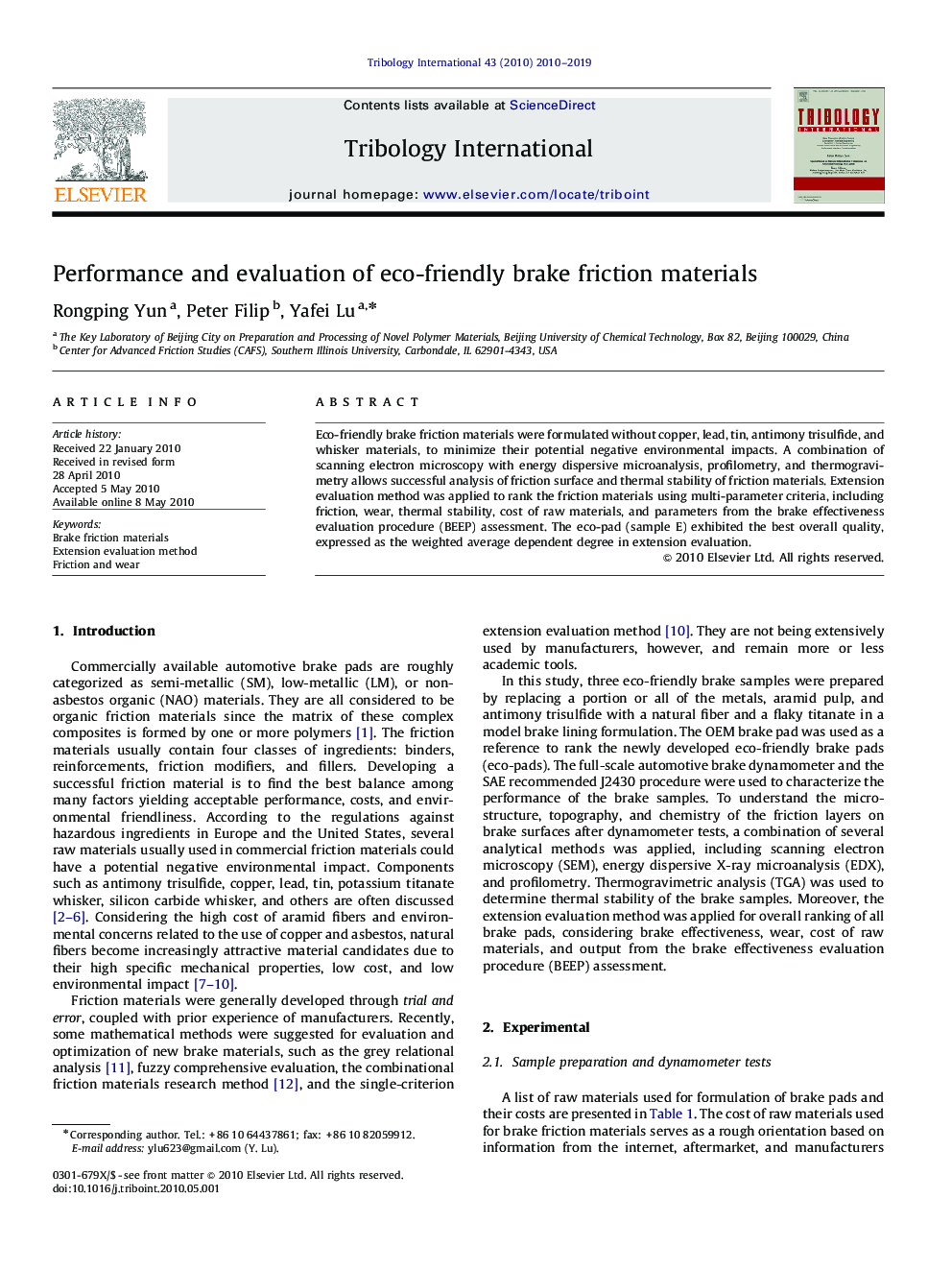| Article ID | Journal | Published Year | Pages | File Type |
|---|---|---|---|---|
| 615817 | Tribology International | 2019 | 10 Pages |
Abstract
Eco-friendly brake friction materials were formulated without copper, lead, tin, antimony trisulfide, and whisker materials, to minimize their potential negative environmental impacts. A combination of scanning electron microscopy with energy dispersive microanalysis, profilometry, and thermogravimetry allows successful analysis of friction surface and thermal stability of friction materials. Extension evaluation method was applied to rank the friction materials using multi-parameter criteria, including friction, wear, thermal stability, cost of raw materials, and parameters from the brake effectiveness evaluation procedure (BEEP) assessment. The eco-pad (sample E) exhibited the best overall quality, expressed as the weighted average dependent degree in extension evaluation.
Related Topics
Physical Sciences and Engineering
Chemical Engineering
Colloid and Surface Chemistry
Authors
Rongping Yun, Peter Filip, Yafei Lu,
